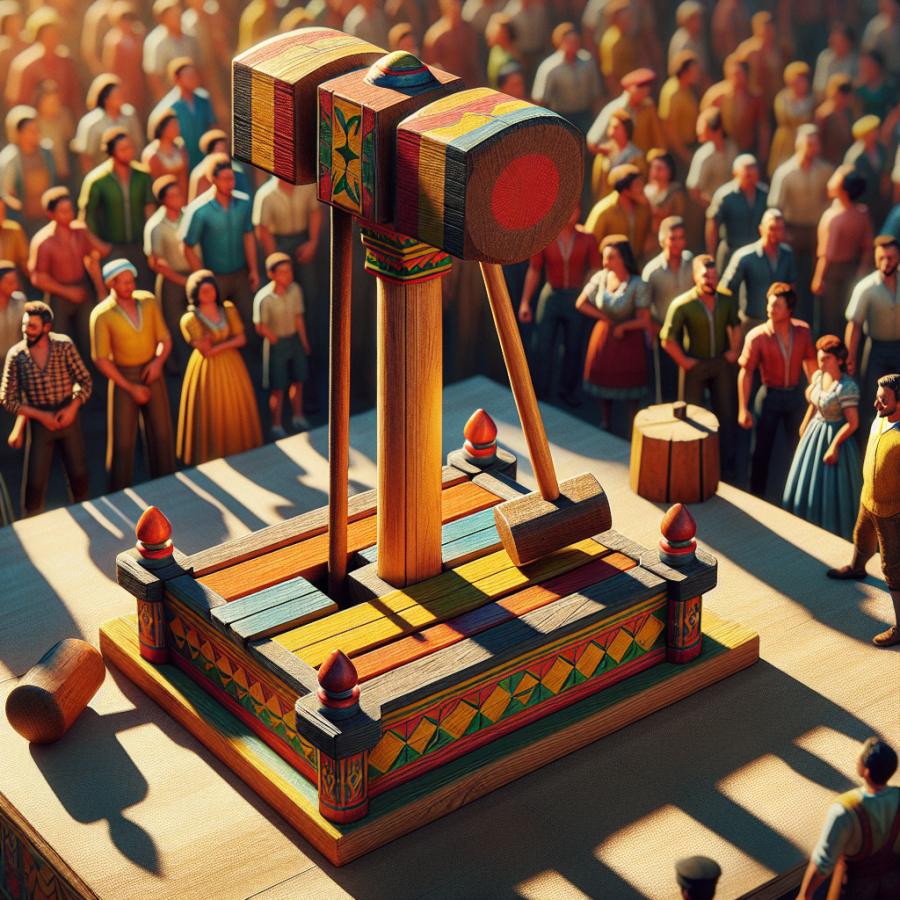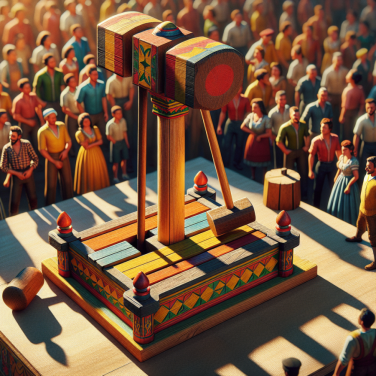The Allure of the Mighty Hammer: Tracing the High Striker's Enduring Popularity
High strikers, also known as strength testers, have been a captivating attraction at fairs, amusement parks, and carnivals for well over a century. But what accounts for their enduring popularity? It seems that a combination of psychological allure, nostalgia, and the simple joy of competition has kept these towering challenges relevant in the hearts of fairgoers of all ages.
The visual appeal of a high striker is undeniable. Towering sometimes over 10 feet tall, it is a beacon of challenge. The brightly painted targets and the chance to ring the bell at the pinnacle is an irresistible siren call for many attendees. It's a visual spectacle not just for the participant, but also for the crowd that gathers, offering a collective experience that is increasingly rare in the era of personal, digital entertainment.
The hammer itself is an emblem of strength and power. Across various cultures, the hammer is wielded by gods and heroes, from Thor in Norse mythology to John Henry, the steel-driving man of American folklore. When a fairgoer picks up the mallet, there's a momentary transformation that occurs; they are the hero, the protagonist of their own story. The act of swinging the hammer and garnering the strength to propel that puck up the scale to the bell is a physical manifestation of their own capabilities and power.
The high striker also taps into the deeply ingrained competitive nature of humans. The urge to prove one's strength, to compete, and to earn bragging rights is a powerful motivator. For men, particularly, it's often an unspoken challenge, a test of manliness that is hard to resist.
But the competition isn't always about physical strength. Families and friends cheer each other on, and the laughter that follows a surprising success or a humorous failure is a bonding experience. Couples on dates use the high striker as a playful test of valor, creating memories and stories to share later. The competition can be light-hearted, but it always brings people together, creating a community around the base of the high striker.
There is a nostalgic element as well. For older generations, the high striker recalls the fairs of their youth, a simpler time when entertainment was less about technology and more about physical presence and participation. Many who step up to the challenge want to recapture that youthful exuberance, to once again take a swing and maybe even show the younger generation ‘how it's done’.
Read also:
Champion's Choice: Top Crypto Exchanges in Sports
Step Right Up: Mastering the Technique for the Perfect High Striker Swing
If you've ever strolled through a carnival, you've likely heard the resonant clang of the bell from a high striker, inviting fairgoers to test their might with a mallet. It's a classic challenge, one that beckons to the strong and the brave, year after year. But what is the secret to transforming a simple swing into the hit that rings the bell?
The basic premise behind the high striker, also known as a strength tester, is straightforward: swing a hammer or mallet to hit a lever, which propels a puck or weight up a track to hit a bell. While it does require strength, technique is the larger part of the equation. By mastering the correct method, even those who may not have the brute strength can enjoy the sweet sound of success.
The first step is your stance. Balance is key. Stand with your feet shoulder-width apart, providing a stable base. This position ensures your body is balanced and ready to transfer energy from the ground up through your swing.
Next is the grip. Hold the mallet near the end of the handle; this maximizes leverage, allowing for a greater transfer of energy upon impact. Ensure your hands are not too close together, which can reduce power and control.
Now, let's focus on arm position. Raise the mallet using both arms, keeping your dominant hand below your non-dominant one. The ideal starting position is with the mallet raised over your shoulder or head, depending on your comfort and control. This raised position will allow for a greater range of motion, translating into more momentum as the mallet descends.
The swing itself is where the magic happens. It's not just about bringing the mallet down; it's about channeling the energy from your entire body into that precise moment of impact. Start by engaging your core and legs. As you bring the mallet down, bend slightly at the knees and use your hips to generate force. Think of it as a fluid motion where every part of your body contributes, similar to swinging an axe or a baseball bat.
Upon striking the lever, aim for the center. Hitting off-center can dissipate the energy you've built up, reducing the puck's upward momentum. Your follow-through is just as important as the initial swing. Follow through with your swing after the mallet hits the lever to ensure that you're not pulling any punches and you're transferring the most energy possible.
It's vital to practice.




